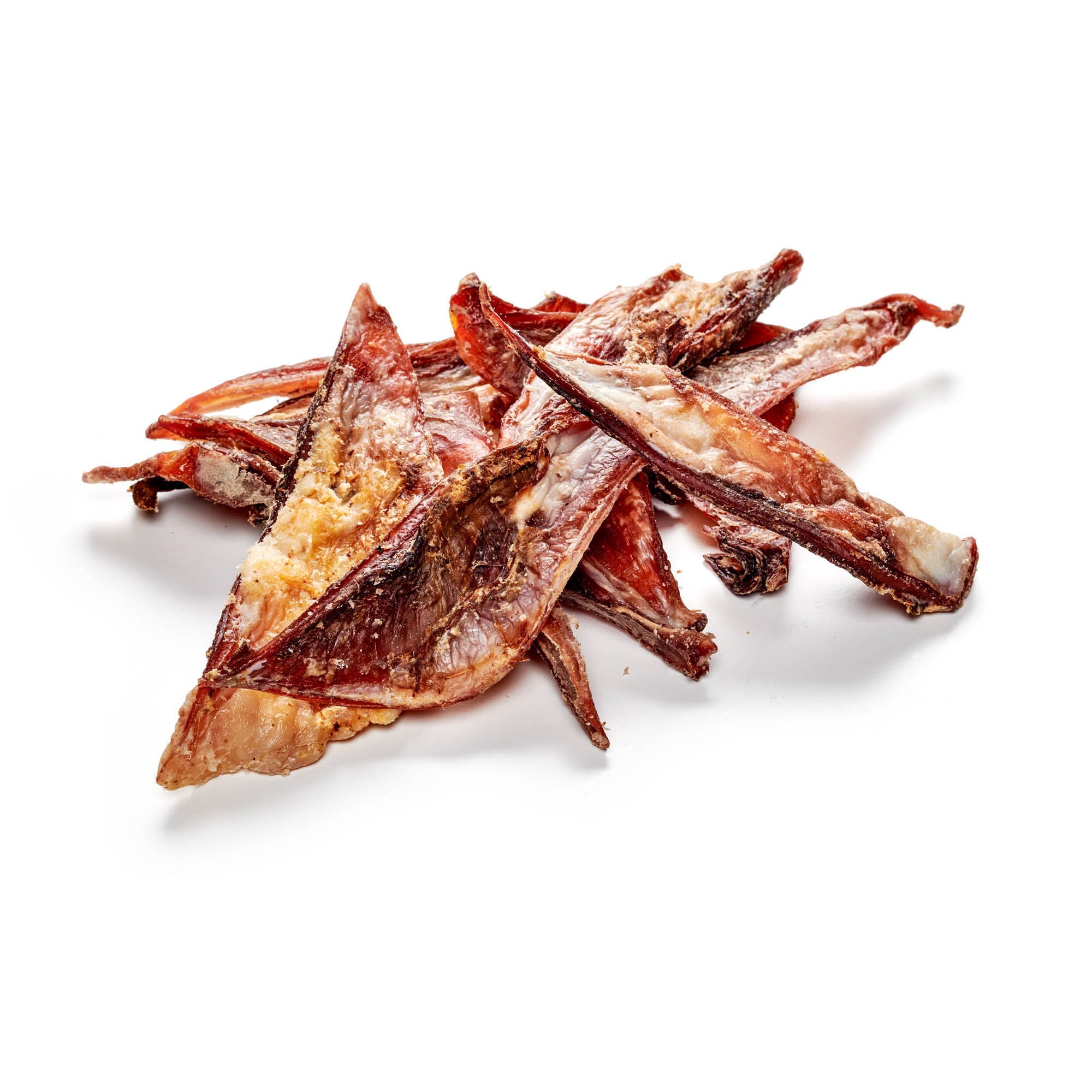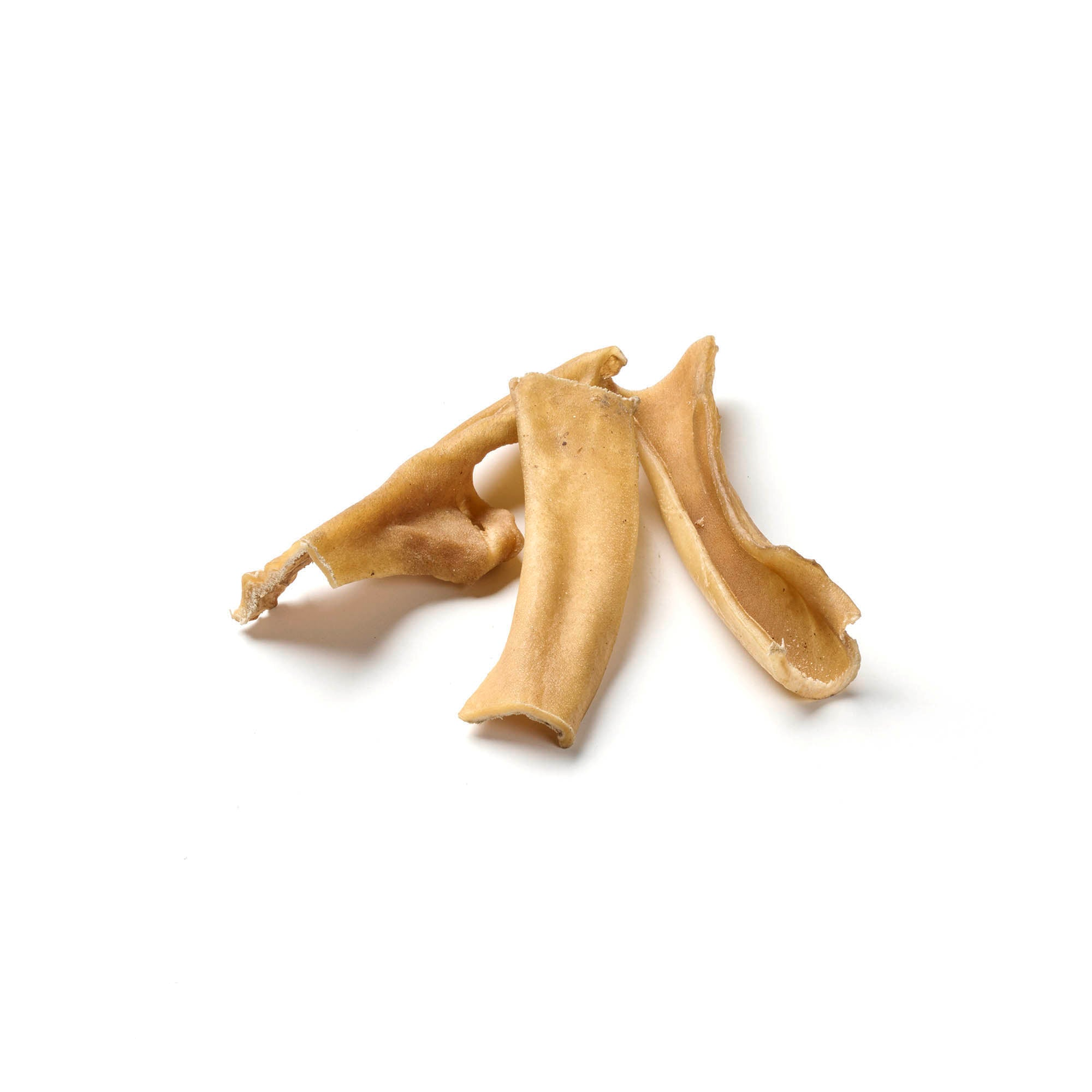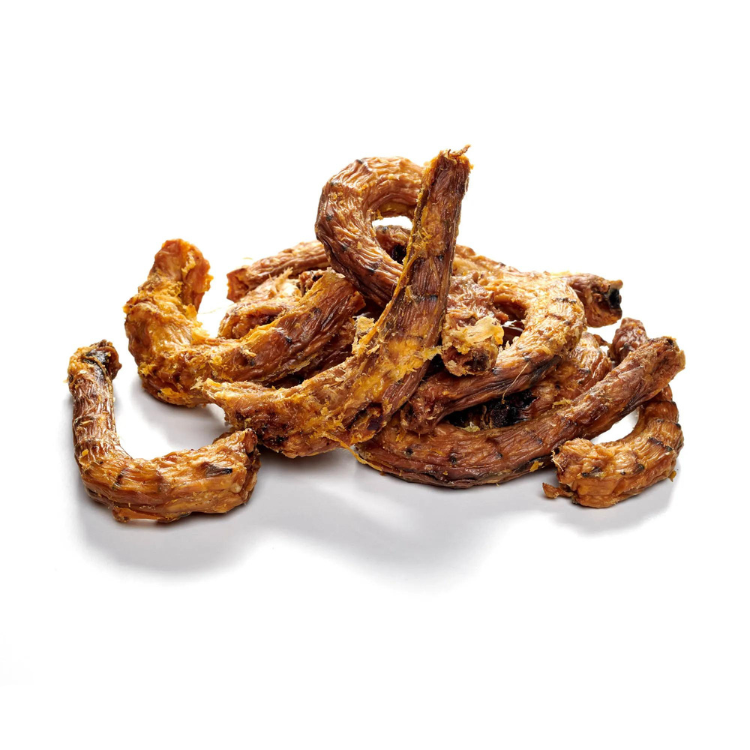
The Evolution of Dogs: From Wolf to Man’s Best Friend Introduction
Share
Dogs hold a special place in the hearts of many people. These loyal companions, who now live in millions of homes, have a fascinating history behind them. From the wild wolves that once hunted in the wild to the various dog breeds that now share our sofas and beds, the evolution of dogs is an amazing journey. This text highlights the most important stages of this development and shows how dogs went from being wolves to becoming man's best friend.
Contents: The evolution of dogs: From wolf to man’s best friend
- Origin and Ancestry
- Domestication
- The early human-dog relationship
- The development of dog breeds
- Dogs in the Middle Ages and the Renaissance
- The dog in modern times
- Dogs and their special abilities
- The dog as best friend
- Conclusion
Delicious chews for your faithful companion now available!
Origin and Ancestry
The history of dogs begins with wolves. These impressive predators lived in packs and were known for their intelligence and social structures. Around 30,000 years ago, their history began to intertwine with that of humans. Wolves were attracted to human settlements and food supplies. This early interaction laid the foundation for later domestication and the close human-dog relationship.
The wild ancestors: The wolf
Wolves are the direct ancestors of our modern dogs. They lived in complex social structures and were known for their hunting skills and intelligence. They roamed the ice age steppes and forests, always looking for food. These predators had close social contacts with each other and hunted in packs, which increased their chances of survival. Their proximity to human settlements was the beginning of a relationship that would develop over millennia.
First encounters between humans and wolves
The first encounters between humans and wolves were probably of mutual benefit. Humans let the wolves roam freely because they helped keep camps clean and keep predators away. In return, the wolves received a reliable source of food. This early symbiotic relationship resulted in wolves, who were less aggressive and more curious, having advantages. Over many generations, these traits were reinforced, and the first domesticated dogs emerged.
Reasons for domestication
Why were wolves domesticated in the first place? The answer lies in the benefits that both sides gained. Humans benefited from the wolves' protective and hunting abilities, while the wolves gained access to a stable food source. In addition, wolves that lived near humans showed greater adaptability and were less aggressive, making them ideal candidates for domestication. Thus began one of the most significant partnerships in human history.
Domestication
The transformation of wolves into dogs was a slow and complex process that took thousands of years. This evolution was shaped by natural and human influences. Natural selection played a key role by favoring wolves that could adapt to living near humans. These wolves showed less aggression and more social skills. Over time, these characteristics continued to evolve until the first true dogs emerged.
How wolves became dogs: A long process
The domestication of dogs was not a sudden process, but a long path of adaptation and change. Over many millennia, wolves became more and more adapted to living with humans. Those that were best able to adapt to being close to humans had an evolutionary advantage. They were less aggressive, showed more social skills and were easier to train. This led to a gradual change in their behavior and appearance.
Natural selection and targeted breeding
In addition to natural selection, humans also began to breed specifically. This targeted breeding reinforced certain characteristics that were advantageous for living with humans. Dogs that were particularly good hunters , showed protective instincts or social bonding skills were preferred. This targeted breeding led to greater diversity and specialization of dogs. The first real dog breeds emerged that could fulfill specific tasks, be it as hunters, protectors or companions.
The first domesticated dogs: archaeological finds and evidence
Archaeological evidence shows that the first domesticated dogs appeared between 14,000 and 16,000 years ago. These early dogs were very different from their wild ancestors. Bones and other remains show that they had smaller teeth and a smaller body size. These changes were the result of selection and adaptation to life with humans. These early dogs lived closely with human communities and took on various tasks that ensured their survival.
The early human-dog relationship
In early human societies, dogs had many important roles. They served as guards and protected camps from predators and intruders. As hunters, they helped track and catch game, which ensured the survival of communities. They were also used as porters, transporting heavy loads over long distances. These diverse functions made dogs indispensable companions and cemented their role in society.
Mythology and Cultures: Dogs in Antiquity
Dogs also played a significant role in ancient mythology and cultures. In many ancient civilizations, they were considered sacred animals and associated with gods and heroes. The Egyptians worshipped the dog god Anubis, who accompanied the dead to the afterlife. In Greek mythology, the three-headed dog Cerberus was the guardian of the underworld. These stories and legends show the deep appreciation that people felt for dogs from an early age.
Protection, hunting and companionship: the multifunctional role of dogs
Dogs were not only protective and hunting assistants, but also important social companions. In many cultures they were considered symbols of loyalty and faithfulness. Dogs accompanied their owners on trips and stood by them in difficult times. This close bond between humans and dogs meant that dogs had a permanent place in human society. They became loyal companions or even assistance dogs , offering not only practical but also emotional support.
The development of dog breeds
The diversity of dog breeds is a fascinating result of adaptation and selective breeding . For thousands of years, humans have bred dogs to emphasize certain characteristics, whether for hunting, protection, or as companion animals. This selective breeding resulted in an incredible variety of shapes, sizes, and temperaments. Each breed has its own unique characteristics that adapt them to specific tasks and environments. This diversity demonstrates the adaptability and versatility of dogs.
Diversity and adaptation: Why there are so many dog breeds
The enormous variety of dog breeds is the result of targeted breeding programs over thousands of years. People have bred dogs for specific tasks, such as herding sheep, guarding houses or hunting game. These specializations have resulted in a wide range of physical and behavioral characteristics. The dogs' ability to adapt to different tasks and environments shows their remarkable flexibility and versatility.
Historical breeding programs and their objectives
Historical breeding programs played a crucial role in the development of the various dog breeds. In many cultures, dogs were bred for specific tasks. In the Middle Ages, for example, greyhounds were bred to hunt fast prey and mastiffs were bred for protection. These specialized breeding programs led to further diversification of dog breeds. The goals of these breeding programs were varied, from improving certain skills to creating new breeds that were better suited to people's needs.
Modern dog breeds and their origins
The modern dog breeds known today have their roots in these historical breeding programs. Many of the breeds that are popular as pets today were originally bred for very specific tasks. For example, dachshunds were bred to hunt badgers and collies were bred as herding dogs. These historical origins still influence the behavior and needs of modern dogs. Knowing these origins helps to better understand the individual needs and idiosyncrasies of different breeds.
Discover our selection of premium dog chews!
Dogs in the Middle Ages and the Renaissance
In the Middle Ages and the Renaissance, dogs played an important role in various social classes. In the castles of the nobility, dogs were often status symbols and were kept as companions and protectors. In the fields and villages, however, dogs were indispensable helpers in hunting and protecting livestock. These different roles showed the versatility and adaptability of dogs. Regardless of their environment, dogs were always reliable and loyal companions.
Some of the dog breeds that became known at this time are:
- Greyhound : This sighthound was particularly popular for hunting fast prey such as deer and hares. Its elegance and speed also made it a symbol of nobility.
- Bloodhound : Known for its exceptional sense of smell, the Bloodhound was used to track game and later to hunt criminals. Its ability to follow scents over long distances was unparalleled.
- Mastiff : These large and powerful dogs were used as guard dogs in castles as well as in the fields. Their strength and loyalty made them valued protectors.
- Afghan Hound : Originally from Afghanistan, this elegant and fast dog found its way to Europe and was mainly used for hunting.
- Saint Bernard : Known for their role as rescue dogs in the Alps, this breed was bred in the Middle Ages to find and rescue stranded travelers.
- Dachshunds : These small but brave dogs were originally bred to hunt badgers. Their long bodies and short legs allowed them to get into badgers' dens.
These dog breeds demonstrate the variety of tasks that dogs performed in the Middle Ages and the Renaissance and underline their importance in various areas of human life.
Dogs in castles and fields: different roles
In the Middle Ages and the Renaissance, dogs had different roles in different social classes. In the castles of the nobility, dogs were often status symbols and were kept as companions and protectors. They accompanied their masters on trips and served as hunting assistants. In the fields and villages, however, dogs were indispensable helpers in hunting and protecting livestock. These different roles showed the versatility and adaptability of dogs in different social and economic contexts.
Cultural significance and representation in art and literature
The cultural significance of dogs was also reflected in art and literature. During the Renaissance, dogs were often depicted in paintings that showed their role in society and their relationship with humans. Poets and writers honored the loyalty and bravery of dogs in their works. These depictions illustrate the deep bond between humans and dogs and show how much dogs were valued and revered.
Influence of society on the development of dogs
The social changes in the Middle Ages and the Renaissance had a strong influence on the development of dogs. With increasing urbanization and the growth of cities, the requirements for dogs also changed. New breeds were bred that were better adapted to urban life. These developments demonstrated the ability of dogs to adapt to changing living conditions and to maintain their role in human society.
The dog in modern times
In modern times, the role of dogs changed again. While they were once valued primarily as working animals, they are now increasingly viewed as family members. This change is reflected in the way dogs are kept and treated. Dogs are not only companions, but also loyal friends and important parts of family life. This emotional bond is a central aspect of the modern human-dog relationship.
The dog as a pet: From work to family
In modern times, the role of dogs has changed significantly. While they were once valued primarily as working animals, today they are first and foremost family members. This change is reflected in the way dogs are kept and treated. They are not only companions, but also loyal friends and important parts of family life. This emotional bond between humans and dogs is a central aspect of the modern relationship with these wonderful animals.
The influence of industrialization and urbanization
The industrialization and urbanization of the 19th and 20th centuries had a major impact on the keeping and breeding of dogs. As cities grew, new breeds were bred that were better adapted to life in smaller apartments. The changing living conditions also led to an increased demand for dogs as companions and family members. These developments show how flexible and adaptable dogs are and how they adapt to people's changing needs.
The dog in science and research
In modern times, dogs also play an important role in science and research. They are used in many fields, from behavioral science to medical research. Dogs help to gain important insights into human health and behavior. Their special skills and close relationship with humans make them ideal research partners. These scientific contributions underline the versatile talents of dogs and their importance in modern society.
Dogs and their special abilities
Dogs have an amazing variety of skills that make them indispensable helpers in many areas. Sniffer dogs are used to track down drugs, explosives or missing people. Guide dogs give visually impaired people the freedom to move safely and independently. Therapy dogs bring comfort and joy to hospitals and care facilities. These diverse talents show how adaptable and valuable dogs are in different areas of life.
Tracking dogs, guide dogs and therapy dogs: the diverse talents
Dogs have an amazing variety of skills that make them indispensable helpers in many areas. Sniffer dogs are used to track down drugs, explosives or missing people. Guide dogs give visually impaired people the freedom to move safely and independently. Therapy dogs bring comfort and joy to hospitals and care facilities. These diverse talents show how adaptable and valuable dogs are in different areas of life. Their extraordinary skills and strong bond with people make them unique companions.
The connection between humans and dogs: empathy and intuition
The special bond between humans and dogs is based on deep empathy and intuition. Dogs are able to recognize and respond to human emotions. This ability makes them loyal companions who can offer comfort and support in difficult times. This emotional intelligence is an important reason why dogs are so valued and play such an important role in many people's lives. The close bond and understanding between humans and dogs is truly remarkable.
Modern training methods and behavioral research
Modern training methods, such as clicker training , and behavioral research have helped to improve the understanding and relationship between humans and dogs. Positive reinforcement and reward-based training using appropriate training snacks have proven to be particularly effective. These methods strengthen the bond between humans and dogs and promote a trusting and cooperative relationship. Behavioral research helps to better understand the behavior and needs of dogs and improve their quality of life.
The dog as best friend
The emotional bond between humans and dogs is unique and profound. Dogs offer unconditional love and loyalty, which can provide comfort and support in difficult times. This close bond strengthens the well-being and joy of life for many people. Dogs are not just pets, but also loyal friends and family members who enrich life and bring joy.
Success stories: Dogs that change lives
There are many moving stories of dogs who have made an amazing difference in their owners' lives. From rescue dogs who have rescued people from dangerous situations to therapy dogs who bring emotional healing, these stories are a testament to the extraordinary skills and compassion of dogs. These success stories show how profound and positive the impact of dogs on human lives can be.
The psychology behind the human-dog relationship
The psychology behind the relationship between humans and dogs is fascinating and complex. Dogs promote well-being and reduce stress and loneliness. Interaction with dogs releases oxytocin, a hormone that induces feelings of happiness. These positive effects explain why dogs are such valued companions and play such an important role in many people's lives. The psychology behind this relationship shows how deep and meaningful the bond between humans and dogs really is.
Conclusion
The evolution of dogs is a fascinating story of adaptation and partnership. From wild wolves to man's loyal companion, dogs have undergone a remarkable evolution. This story shows the deep bond and mutual benefit that this relationship has brought. Dogs are now indispensable companions that enrich and support people's lives. The future of this relationship looks promising, and the eternal friendship between man and dog will surely continue to exist and thrive.
Treat your dog to something special with our chew products!














